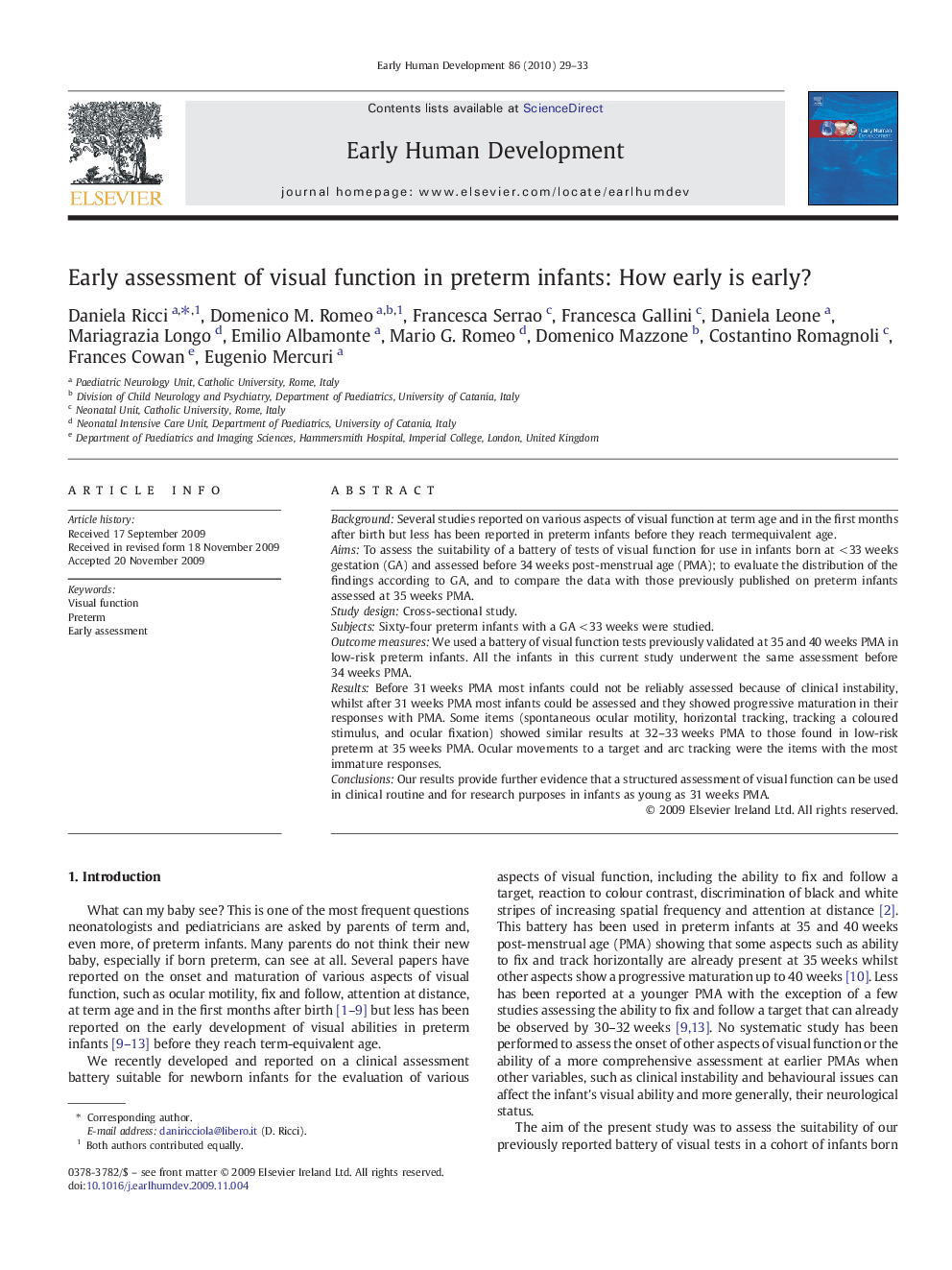| Article ID | Journal | Published Year | Pages | File Type |
|---|---|---|---|---|
| 3918474 | Early Human Development | 2010 | 5 Pages |
BackgroundSeveral studies reported on various aspects of visual function at term age and in the first months after birth but less has been reported in preterm infants before they reach termequivalent age.AimsTo assess the suitability of a battery of tests of visual function for use in infants born at < 33 weeks gestation (GA) and assessed before 34 weeks post-menstrual age (PMA); to evaluate the distribution of the findings according to GA, and to compare the data with those previously published on preterm infants assessed at 35 weeks PMA.Study designCross-sectional study.SubjectsSixty-four preterm infants with a GA < 33 weeks were studied.Outcome measuresWe used a battery of visual function tests previously validated at 35 and 40 weeks PMA in low-risk preterm infants. All the infants in this current study underwent the same assessment before 34 weeks PMA.ResultsBefore 31 weeks PMA most infants could not be reliably assessed because of clinical instability, whilst after 31 weeks PMA most infants could be assessed and they showed progressive maturation in their responses with PMA. Some items (spontaneous ocular motility, horizontal tracking, tracking a coloured stimulus, and ocular fixation) showed similar results at 32–33 weeks PMA to those found in low-risk preterm at 35 weeks PMA. Ocular movements to a target and arc tracking were the items with the most immature responses.ConclusionsOur results provide further evidence that a structured assessment of visual function can be used in clinical routine and for research purposes in infants as young as 31 weeks PMA.
